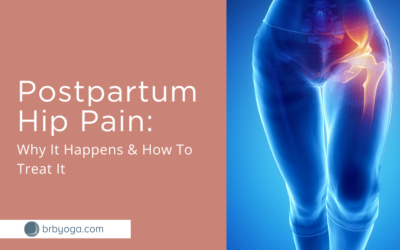Nursing can take a toll on the body.
The constant rounding of the shoulders, holding the baby in your arms, and sitting or lying awkwardly can create strain in the body. If you have an abdominal separation (diastasis recti) or pelvic floor issues, nursing can add to the strain in those areas.
Today, I am sharing the best nursing positions for core health and pelvic floor health. These tips will help ensure that your time spent nursing doesn’t harm your body.
Please know: You will never be perfect in this endeavor! You will absolutely find yourself in less than ideal positions. That is ok! The body is very adaptable and it can handle less than ideal positions. Our goal is just to ensure that you spend more of your time in good alignment than you spend in bad alignment.
General Principles For Protecting The Core While Nursing

There are a few things you want to keep in mind while nursing:
- Try to give your abdominal area as much space as possible. When you round over and squash your core, this pushes pressure out on the weak areas of the body (like an abdominal separation or weak pelvic floor). Over time, constant squashing of the abdomen can make these areas even weaker.
- Relax as much of the body as possible. Holding tension in the body can create strain on a weak core and pelvic floor. As much as possible, try to position yourself in a way that allows you to relax as much of your body as possible.
- Let go of the idea of perfection! Try to be mindful of your positioning without being militant.
Best Nursing Positions For Core Health:
Sidelying
If you can lay on your side with your baby while nursing, that is ideal. Your abdominal area will remain spacious (i.e. not crunched over), meaning you won’t be putting extra pressure on that area. And you will be able to relax the body.
Lying on the back with the baby draped to one side
In this position, the weight of the baby will rest on the ribs rather than the soft tissue of the belly. This helps minimize the squashing of the core and helps protect the belly and pelvic floor.
Seated With Support
In seated, the goal is to reduce the level of tension you are holding in the body. I recommend the following supports when nursing while seated.
- Place a rolled hand towel behind your low back to help keep your low back from rounding into your chair or couch. This keeps your pelvis neutral and minimizes pressure on the abdomen.
- Place a pillow behind your head so that you can allow your neck and shoulders to relax as completely as possible.
- Use a boppy type pillow to support the baby so that you don’t have to use as much effort to hold the baby.
Again, these positions are ideal, but won’t always be possible. If you’re in a coffee shop or out at your kid’s soccer game, just do the best you can!





